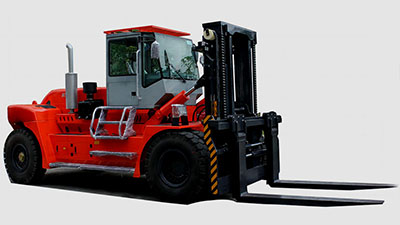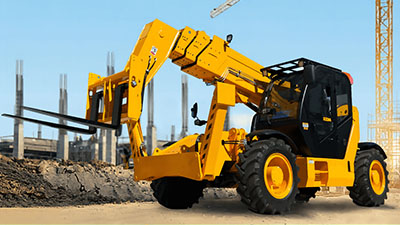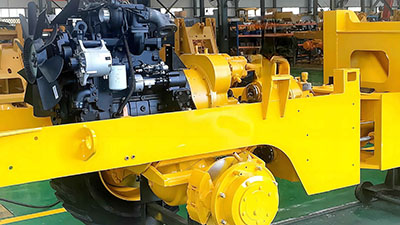Types of forklifts – which one to choose?
Mar. 31,2021
A forklift is an indispensable technique for handling loads from 1.5 to 5 tons. But load capacity is only one of their characteristics, taken into account when choosing a loader.
For the right choice, you should pay attention to such technical parameters as the height of the load, the type of forklift, transmission, brakes, tires, overall dimensions, fork length, number of hydraulic distributor sections.
But still, the main factor is the power and type of engine – diesel, gas, gasoline or electric.
Diesel forklift
Conditions
Works without problems indoors and outdoors, in frost and heat, but is unsuitable for work in small enclosed spaces without good ventilation.
Pros
• Price. Diesel forklifts are cheaper than gas and electric ones with similar characteristics by an average of 20-30%.
• Works in any weather. Starts at -30 º without problems. A gas loader can’t do that.
• More power. More lifting capacity and lifting height means more efficiency.
• Round the clock work. You only need a diesel in the tank for constant operation. For comparison: after 8 hours, an electric forklift needs to be sent for charging, a gas cylinder needs to be changed. In a situation where a truck arrives at the end of the working day and needs to be unloaded urgently, the diesel loader wins.
• Long engine life. Guaranteed to work for many years even in 3 shifts.
Minuses
• Noise. Noise from the engine is a constant companion of diesel forklifts, which makes it difficult to work in small spaces.
• Exhaust. When burned, diesel fuel releases toxic decomposition products into the air, so the room must be well ventilated.
• Fuel price. She is constantly growing.
• Harder to maintain. A loader with a diesel internal combustion engine is harder and more expensive to maintain. It is necessary to change oils, monitor the condition of all machine components and carry out expensive maintenance.
• Cannot be used in warehouses with products.
gas loader
Pros
• Low cost. Gas loaders, like diesel ones, are cheaper than electric ones by an average of 20-30%.
• Work in small poorly ventilated areas. Unlike diesel forklifts, they emit much less harmful substances during operation, so they are used in small closed warehouses.
• Inexpensive fuel. Gas is inexpensive, using forklifts with such an engine can save a lot.
• Easier to maintain. Cheaper maintenance and repair. For example, oil in gas forklifts needs to be changed 70% less often than in diesel ones.
• Small noise level. LPG forklifts are quieter than diesel counterparts.
• Starts in any weather.
Minuses
• Less power. LPG forklifts operate at a lower weight and height than diesel forklifts.
• It takes time to change the cylinder. One cylinder is enough for an average of 6-8 hours of operation of a loader with a load capacity of 1.5-2 tons. Then you have to spend time replacing. Although it takes 10-20 minutes to replace, but when renting it is essential.
Electric forklift
These are state of the art loaders.
Pros
- • Environmental friendliness. No emissions. Electric forklifts can work in any premises: grocery, with poor ventilation, small, enclosed.
- • Great power. Like diesel forklifts, they can lift heavy loads to great heights.
- • Profitability. Electricity is cheaper than gas and solariums.
- • No fuel storage space required. For electric forklifts, you do not need to store gas cylinders or barrels with solarium, you need a 380V socket.
- • Ease of maintenance. Maintenance intervals are longer than other models, it is cheaper and easier.
- • Engine durability. An electric motor has a huge life cycle, longer than that of an internal combustion engine.
- • No noise. Unlike previous models, the battery-powered forklift is practically silent, which allows it to be used in small spaces.
Minuses
• Price. 20-30% more expensive than gas and diesel forklifts.
• Needs to be charged once per shift. Such a loader cannot work around the clock – its battery needs to be replaced. The situation with the truck described at the beginning of the material at the end of the working day puts the electric forklift to a standstill. It takes 5-10 hours to fully charge.
• Replacing the battery. After 5 years, in most cases, you have to change the battery to a new one.
• It is undesirable to work in rain and snow. Precipitation is an obstacle to working on an electric forklift.






